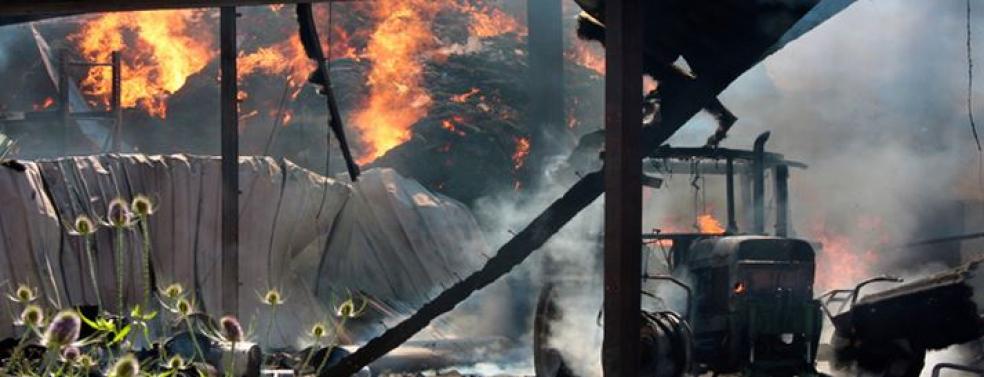
Hay bales storage advice following barn fires
Devon & Somerset Fire & Rescue Service has issued guidance about the storage of hay bales following three barn fires on Monday (5 October) morning.
At least one of the fires, in Tiverton, is believed to have started by the self-ignition of hay bales within the barn, while the other two, in Axminster and Combe Martin, are still under investigation.
The barn and 60 bales of hay were damaged in the Tiverton fire but fortunately some pigs were removed from the barn unharmed.
Generally, one of the areas of high risk is when dry and wet hay meets. The heat and humidity from the wet hay react with the dry hay and the insulation provided by the stack can allow a fire to start.
Research suggests that most problems with spontaneous combustion start within the two weeks of the hay being stored, although combustion is still possible for a further six weeks.
If your hay is a little too wet or green, you should start checking the stack after two days and continue daily for two weeks. The best way to check whether bales are overheating is to insert an extendable temperature probe or a thermometer on the end of some string into the middle of the bales.
There are several ways to prevent heat build-up and the possibility of fires in hay:
• Try not to bale hay that is a too wet or green
• Stack small rectangular bales on their narrow (on edge) side
• Stack wetter, greener or heavier bales on the outside
• Allow plenty of ventilation within the stack
• Regularly check the stack and its temperature just after storage
• Store Agro chemicals separate from hay where possible.










